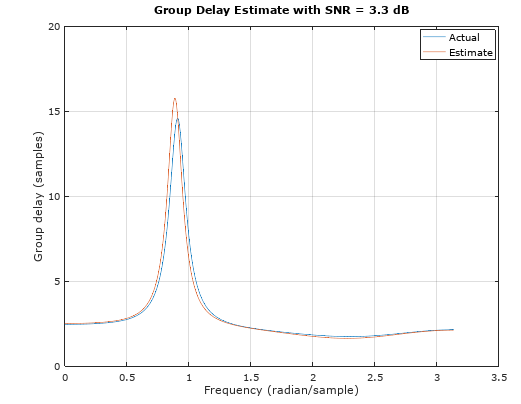I am trying to practically determine filter group delay so that I can try to reduce or adjust for it. I have tried all kinds of methods but still can't get the right result. I know that theoretically to get the group delay you should differentiate the phase response with respect to frequency. How can I use this theoretical result to determine what delay will actually occur to my whole signal envelope? I ask because the theory does not seem to apply in practice in the way I have understood it.
I have tried to align filtered and unfiltered signal to see an actual shift but I do not seem to see any delay. I have tried adding a spike (Ok which is zero frequency) just so that I can compare the position of the spike in the original and the filtered signal, but the spike does not move in the filtered signal.
Additionally, some filters have both negative and positive theoretical group delay. In those filters should I take the average across all frequencies to determine the effective group delay?
I have added an example below in MATLAB. I used a linear phase FIR filter (a comb filter) which should have a delay of 20 samples according to MATLAB across all frequencies. But I have looked at the plots with the filtered and original signal on the same axis but could not get 20 samples at several frequencies.
%% Filter
b=[1,zeros(1,39),-1];%y(n)=x(n)-x(n-40)
a=1;
subplot(3,1,1)
grpdelay(b,1)
% Simulate
Fs=1000;
t=0:1/Fs:(5-1/Fs);
wi=blackman(length(t))';
spike=zeros(1,length(t));
spike(300)=0.02;%Feature
spike(150)=0.02;%feature
x1=sin(2*pi*49*t).*wi+spike;
x2=sin(2*pi*25*t).*wi;
x3=sin(2*pi*2*t).*wi;
x=[x1,x2,x3];
y=filter(cb,1,x);
subplot(3,1,2)
plot([x',y'])
title('x vs filtered x');
legend({'x','x-filtered'})
% show spike
subplot(3,1,3)
plot([x',y'])
title('x vs filtered x, zoomed to see spikes');
legend({'x','x-filtered'})
xlim([130,350])
My overall question is how can I practically measure the effective signal envelop delay due to filtering? I would like to match this measured delay with the theoretically calculated delay.






